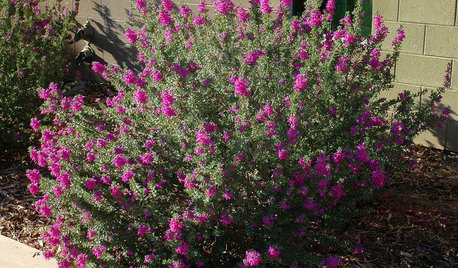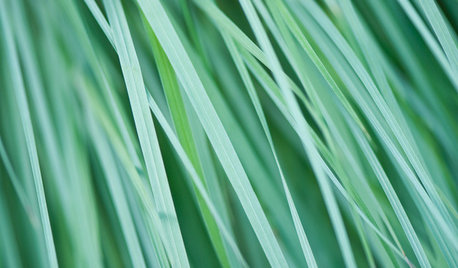What follows is a generic calendar of recommended lawn care practices designed to help you care for Bermuda grass lawn. Please understand this is generic and time tables may have to be adjusted for you geographical location.
March through May
Mow when it first turns green in the spring with a reel mower if possible set at 3/4 to 1 inch, or with a rotary mower set as low as possible without scalping. You should mow before grass gets taller than 1 1/2 to 2 inches.
Practice mulch mowing, aka grass cycling, which means simply leaving grass clippings on your lawn. Grass clippings decompose quickly and can provide up to 25 percent of tire lawn's fertilizer needs. If prolonged rain or other factors prevent frequent mowing and clippings are too plentiful to leave on the lawn, they can be collected and used as mulch. Whatever you do, don't bag them! Grass clippings do not belong in landfills.
Fertilization
Apply 1 pound of nitrogen per thousand square feet when the grass is about 50 to 75% greened up. If possible and motivated submit a soil sample to determine nutrient and lime requirements for exact requirements. Otherwise in lieu of soil test use a complete nitrogen-phosphorus-potassium (N-P-K) turf-grade fertilizer with a 3-l-2 or 4-1-2 ratio (for example, 15-5-10 or 20-5-10). Consult your county Cooperative Extension center for details.) Apply lime if suggested.
To determine the amount of product needed to apply 1 pound of' nitrogen per thousand square feet, divide 100 by the first number in the fertilizer ratio. For example, for a 20-5-10 product, divide 100 by 20. The result is 5.0 pounds of product per thousand square feet.
Irrigation
Water to a soil depth of 4 to 6 inches. Probe with a screwdriver to determine moisture depth. Bermuda grass needs a weekly application of about 1 to 1 1/4 inches of water. On sandy soils it often requires more frequent watering, for example, 1/2 inch of water every third day. It may be necessary to irrigate an area for 3 to 5 hours to apply 1 inch of water. (It requires 640 gallons of water to deliver 1 inch of water per thousand square feet.) Because clay soils accept water slowly, irrigate just until runoff occurs, wait 1/2 hour until the water has been absorbed, and then continue irrigating until the desired depth or amount is obtained. Best watering frequency for conservation is determined by looking for dark bluish gray color, foot printing, wilted, folded, or curled leaves indicate that it is time to water. Proper irrigation may prevent can reduce pest problems and environmental stress later in the summer.
Weed Control
Apply pre-emergence herbicides to control crabgrass, goose grass, foxtail, etc by the time the dogwoods or forsythia are in full bloom.
Apply post-emergence herbicides in May as needed to control summer annual and perennial broadleaf weeds such as knotweed, spurge, and lespedeza. Products containing two or three broadleaf herbicides usually control several different broadleaf weeds in a lawn more effectively. Be sure the product is labeled for use on Bermuda grass.
Apply post emergence herbicides only when weeds are present, and wait until three weeks after the lawn becomes green. Be sure to follow label instructions and note temperature limitations of product if used.
Insect Control
Bermuda grass is virtually immune to insect damage except white grubs. Check for white grubs and control them if necessary.
Thatch Removal
If proper water, mowing, and fertilizing techniques are followed thatch should not normally be a problem. If needed vertically mow in May to remove the thatch (layer of un-decayed grass) after the lawn becomes green if the thatch is more than inch thick.
June through August
Mowing
Lower mower height to desired mowing height and in accordance with the variety of Bermuda grass you have. As a general rule the hybrids should be maintained between ½ to 1 inch, and common varieties between 1-1/2 and 2 inches. Mow frequently as not to remove more than 1/3 of leaf material while maintaining desired height. This may require mowing two to three time per week.
Fertilization
Apply 1 pound of nitrogen only product per thousand square feet every 4 to 6 weeks using a slow release urea product. Something like either 34-0-0 or 39-0-0.
Irrigation
Follow the March through May irrigation guidelines.
Weed Control
Apply post-emergence herbicides as needed to control summer annual and perennial broadleaf weeds such as knotweed, spurge, and lespedeza. Crabgrass, goose grass, dallisgrass, nutsedge, annual sedges, and sandbur can be controlled with post-emergence grass control herbicides. Two or three applications 7 to 10 days apart are required for effective control. Apply herbicides only when weeds are present and the weeds are actively growing, and when the lawn is not suffering from drought stress. Follow label directions and watch for the temperatures.
Insect Control
Follow the March through May insect control guidelines. August is the best time to control white grubs because they are small and close to the soil surface.
September through November
4 to 6 weeks before the first expected frost. Raise the mowing height 1 inch as winter approaches. This will add insulation and some freeze protection in transitional areas or areas where freezing temps are encountered during the winter.
Fertilization
Apply last application for the season of no more than 1/2 pound of nitrogen only per thousand square feet in September or four to six weeks before the first expected frost. Use can use a low-nitrogen, high-potassium fertilizer such as a 5-10-30, to supplement nitrogen if a balanced fertilizer was not used as the first application in the spring or a soil test indicates a deficiency.
In addition you can apply lime or sulfur if earlier soil test indicated a deficiency from earlier soil test and it was not practical to add the required amounts in spring.
Irrigation
Follow the March through May irrigation guidelines. Dormant Bermuda grass may need to be watered periodically when warm, windy weather prevails.
Weed Control
Apply pre-emergence in September or October, or post-emergence herbicides as needed to control winter annual and perennial broadleaf weeds such as chickweed and henbit. Pre-emergence herbicides do not control existing perennial weeds. Apply post-emergence herbicides only when weeds are present.
December through February
Irrigation
Dormant Bermuda grass may have to be watered periodically to prevent desiccation, especially when warm, windy weather prevails.
Weed Control
Apply broadleaf herbicides as needed to control weeds such as chickweed, henbit, and hop clover.
Prepared by: Arthur H. Bruneau, Crop Science Extension Specialist, Turfgrass
Fred H. Yelverton, Extension Crop Science Specialist, Weed Management
Henry C. Wetzel, Extension Plant Pathology Specialist, Turfgrass
Charles H. Peacock, Turfgrass Research and Teaching
Rick L. Brandenburg, Extension Entomologist
Cale A. Bigelow, Extension Associate, Turfgrass
Published by North Carolina Cooperative Extension Service
Publication Number: AG-431 Revised: December, 2000


















sunnyside1
cats_meow_2008
Related Professionals
Norfolk Landscape Architects & Landscape Designers · Ashburn Landscape Architects & Landscape Designers · Bedford Heights Landscape Contractors · Bell Gardens Landscape Contractors · Bethel Park Landscape Contractors · Gallatin Landscape Contractors · Holland Landscape Contractors · New Baltimore Landscape Contractors · Parker Landscape Contractors · Plantation Landscape Contractors · Rockville Landscape Contractors · Salmon Creek Landscape Contractors · Uxbridge Landscape Contractors · West Haverstraw Landscape Contractors · Sudley Swimming Pool Builderstexas_weedOriginal Author
sooner_g
texas_weedOriginal Author
dchall_san_antonio
texas_weedOriginal Author
northtexasturf
texas_weedOriginal Author
trplay
texas_weedOriginal Author
Kevin13
GAyarddog
dchall_san_antonio
dodgeball123
cap8e8
morpheuspa (6B/7A, E. PA)
Bermudairmo
dchall_san_antonio
rkelmore
texas_weedOriginal Author
ken_sharonstewart
dchall_san_antonio
Ryan Chesebro
dchall_san_antonio
Ryan Chesebro
Ryan Chesebro